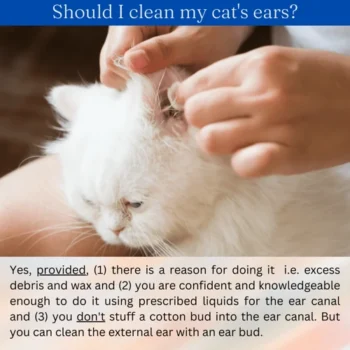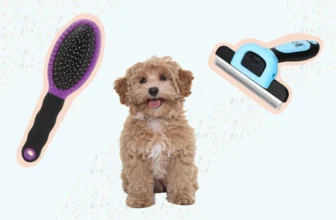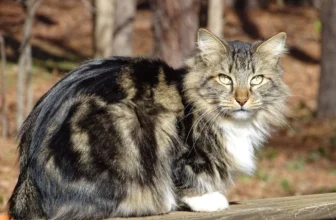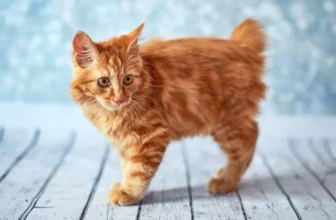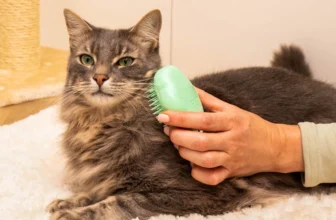Have you ever noticed the unique shape and size of an American Bobtail’s ears and wondered how it affects their cleaning habits? These fascinating felines have a distinct ear anatomy that requires specialized care to keep them healthy and free from issues such as infections, mites, ticks, and injury. In this article, we will dive deep into the anatomy of an American Bobtail’s ear, explore their cleaning habits, and discuss common ear problems that affect this breed. So, grab a cup of tea and let’s explore the intriguing world of the American Bobtail’s ears.
The Anatomy of an American Bobtail’s Ear
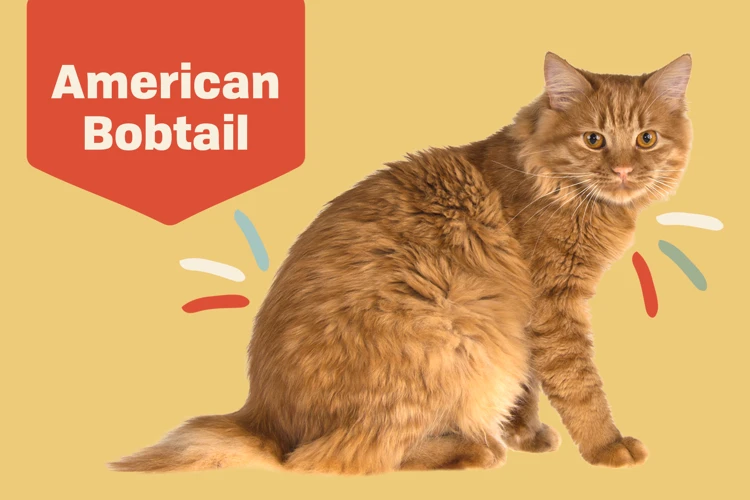
Did you know that the ears of an American Bobtail have unique characteristics that set them apart from many other cat breeds? Understanding the anatomy of your furry friend’s ears is key to ensuring their optimal health and well-being. From the shape and size to the inner ear structure, each aspect plays a vital role in how you care for your American Bobtail’s ears. In this section, we will explore the intriguing anatomy of an American Bobtail’s ear, so you can learn how to take care of their ears and potentially prevent any issues.
Shape and Size
The shape and size of an American Bobtail’s ear can affect how easily it can be kept clean. These cats have medium-sized ears that are set apart on the head and have a slightly rounded tip that may have tufts of hair. The ear flap or pinna is broad and open.
The size and shape of the ear canal also plays a role in how much debris can accumulate. American Bobtails’ ear canals are relatively wide and round, which allows for good ventilation and aeration of the ear. However, this also means they can accumulate more debris than cats with narrow ear canals.
To better understand the size and shape of the ear canal, it’s helpful to look at the anatomy of the entire ear. The following table details the various parts of the American Bobtail’s ear:
| Ear Structure | Description |
|---|---|
| Pinna | The visible part of the ear made of cartilage and covered by skin and fur. |
| Ear canal | The tube-like passage that leads from the base of the pinna to the eardrum. |
| Eardrum | A thin membrane that separates the ear canal from the middle ear. |
| Middle ear | A small, air-filled space that contains the three bones (ossicles) responsible for transmitting sound to the inner ear. |
| Inner ear | A complex structure that contains the sensory organs responsible for hearing and balance. |
Understanding the shape and size of an American Bobtail’s ear can help you clean it more effectively. By using the right size and shape of cleaning tools, you can reach deep into the ear canal to remove debris and prevent infections. For more information on cleaning your American Bobtail’s ears, check out our article on American Bobtail Cat Ear Cleaning.
Hair and Skin
The American Bobtail is a breed known for its distinct appearance and unique characteristics, including its ears. Understanding the anatomy of an American Bobtail’s ear can help in properly caring for them. The hair and skin of an American Bobtail’s ear are important factors to consider when it comes to cleaning.
The hair inside an American Bobtail’s ear is typically short and fine, but can vary in length and thickness between cats. It serves as a barrier to protect the inner ear from debris and foreign objects. However, too much hair in the ear canal can also trap dirt, wax, and moisture, leading to ear infections. It is important to regularly check and trim any long hair in your cat’s ears.
The skin inside an American Bobtail’s ear is delicate and prone to irritation. It is important to avoid using harsh chemicals or abrasive materials when cleaning their ears. Cleaning solutions specifically formulated for cats should be used and applied with a gentle touch. Chemicals and rough materials can cause irritation, itching, and even painful sores inside the ear.
When cleaning an American Bobtail’s ears, it is also important to check the skin for any abnormalities. Any discoloration, bumps, or lumps should be noted and brought to the attention of a veterinarian. These could be signs of infection or other ear problems that require treatment.
Proper care and cleaning of an American Bobtail’s ears is essential to their overall health and well-being. Consider using vet-approved cleaning solutions and tools, such as soft cotton balls or swabs, to effectively clean and remove any trapped debris. For additional help, consult with a veterinarian or professional groomer for advice and assistance.
Using the right tools and technology can make ear cleaning easier and more effective. However, always be cautious when cleaning your cat’s ears and seek professional help if needed. Neglecting ear care can lead to serious ear problems, including infections and hearing loss. In the next section, we will discuss the importance of regular cleaning and potential ear problems that can affect American Bobtails.
Inner Ear Structure
The inner ear structure of an American Bobtail plays a crucial role in their hearing ability. It consists of three parts: the vestibular system, cochlea, and the auditory nerve. Here is a breakdown of each part:
- The vestibular system – This is responsible for the cat’s balance and spatial orientation. It includes the semicircular canals, which detect movement of the head, and the otolith organs, which detect changes in the position of the head.
- The cochlea – This is a spiraled, fluid-filled structure that contains tiny hair cells. Sound waves enter the cochlea, causing the fluid to move and the hair cells to vibrate. This vibration generates electrical impulses that travel through the auditory nerve to the brain, where they are interpreted as sound.
- The auditory nerve – This connects the ear to the brain and transmits signals generated by the hair cells in the cochlea. The brain then interprets these signals as sound.
It’s important to note that the inner ear of American Bobtails is delicate and sensitive. If a cat experiences trauma or frequent infections, it can adversely affect their hearing ability. For more information on ear problems that can affect American Bobtails, check out our article on common ear problems in American Bobtails. It is recommended to consult a veterinarian if you suspect any issues related to hearing. They can also provide guidance on proper ear cleaning methods, which can be found in our article on how to safely clean your American Bobtail’s ears.
Cleaning Habits of American Bobtails
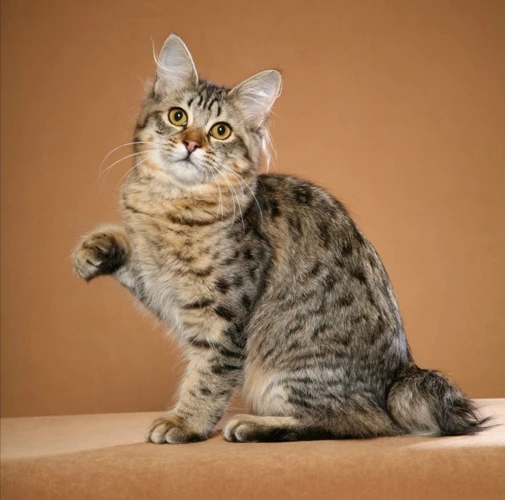
As pet owners, it is essential to maintain our furry friend’s hygiene regularly. A cat’s ears, in particular, can quickly accumulate dirt and wax, leading to infections and other health issues. Hence, it is crucial to understand how to properly clean and care for an American Bobtail’s ears. These unique felines have specific cleaning habits that can benefit their overall health, and by adopting them, you can contribute significantly to their well-being. Let’s explore some practices that will help you keep your American Bobtail’s ears in top condition.
Natural Cleaning Methods
American Bobtails are known for their self-maintenance habits, including their natural cleaning methods. These methods include shaking their heads, scratching their ears with their claws, and licking their fur to remove any accumulated debris from their ears. While these methods might appear to be adequate, pet owners still need to monitor and maintain their cat’s hygiene to prevent ear-related problems.
There are several natural cleaning methods that pet owners can incorporate into their American Bobtail’s hygiene routine. These methods include:
| Olive Oil: | Olive oil is an effective natural cleaning solution that can help remove debris from your cat’s ears. Dip a cotton ball in olive oil and gently swab the inside of the ear. |
|---|---|
| Warm Water: | Another natural cleaning method is using warm water to clean your cat’s ears. Soak a cotton ball in warm water and gently swab your cat’s ear. Make sure not to insert the cotton ball too deep into your cat’s ear canal. |
| Apple Cider Vinegar: | Apple cider vinegar is an effective cleaning solution that can help remove any debris or buildup in your cat’s ear. Mix 1-part apple cider vinegar with 1-part water, soak a cotton ball in the solution, and gently swab your cat’s ear. |
| Hydrogen Peroxide: | Hydrogen peroxide has antiseptic properties that can help prevent ear infections. Mix 1-part hydrogen peroxide with 1-part water, soak a cotton ball in the solution, and gently swab your cat’s ear. Make sure not to use hydrogen peroxide if your cat’s ear is already irritated or inflamed. |
It is important to note that while natural cleaning methods are effective, they should not replace regular veterinarian check-ups or professional cleaning. If you notice any signs of discomfort, discharge, or inflammation in your cat’s ears, contact your veterinarian immediately. Properly maintaining your American Bobtail’s hygiene can prevent ear problems and promote a healthy and happy life for your feline friend.
The Importance of Ear Cleaning
Regular ear cleaning is essential to maintain your American Bobtail’s overall health and well-being. A dirty and unkempt ear can become a breeding ground for bacteria, ear mites, and ticks, leading to painful infections and even permanent hearing loss.
Preventing Ear Infections: Ear infections are one of the most common problems faced by American Bobtail cats. These infections are usually caused by a build-up of wax and debris in the ear, leading to inflammation and bacterial infection. Regular ear cleaning can help prevent these infections by removing dirt, wax, and debris from the ear canal.
Improving Hearing: American Bobtails rely on their hearing to orient themselves in their environment, detect prey, and communicate with their owners. A dirty ear can cause hearing impairment that can affect your cat’s ability to perform these functions. Regular ear cleaning ensures that the ear canal is free of debris, allowing sound waves to reach the eardrum without interference.
Preventing Mites and Ticks: Ear mites and ticks are a common problem faced by American Bobtails, especially those living in areas with high tick populations. Regular ear cleaning can prevent these parasites from making their home inside your cat’s ear canal, reducing the risk of infestation and infection.
To ensure your American Bobtail’s ears are healthy and clean, it’s recommended to clean them once a week. Here is a step-by-step guide on how to safely and effectively clean your cat’s ears:
| Step | Instructions |
|---|---|
| Step 1 | Prepare the cleaning solution: Mix equal parts water and white vinegar or use a commercial ear cleaning solution recommended by your veterinarian. |
| Step 2 | Hold your cat securely and use a cotton ball or pad to gently wipe away any wax or debris visible on the outer ear. |
| Step 3 | Take the ear cleaning solution, apply it to a clean cotton ball, and gently wipe the ear canal’s inner walls. |
| Step 4 | Use another clean cotton ball to dry the ear canal. |
It’s important to note that if your American Bobtail shows signs of discomfort, pain, or has a foul odor emanating from the ear, they may be suffering from an infection or injury. In such cases, it’s best to take your cat to the veterinarian for an examination and treatment.
How to Safely Clean Your American Bobtail’s Ears
Cleaning your American Bobtail’s ears can help prevent infections, irritation, and other ear problems. Follow these steps to safely clean your American Bobtail’s ears:
- Gather your supplies: Before you start cleaning your cat’s ears, make sure you have cotton balls or pads, a gentle ear cleaning solution, and treats to reward your cat for good behavior.
- Choose the right cleaning solution: Select an ear cleaning solution that is specifically designed for cats and avoid using household cleaning products, such as rubbing alcohol or hydrogen peroxide, as they can be harmful to your cat’s ears.
- Start the cleaning process: Hold your cat securely, then dampen a cotton ball or pad with the ear cleaning solution. Gently wipe the inside of your cat’s ear, starting at the base and working your way up. Be careful not to insert the cotton ball or pad too deep into the ear canal.
- Inspect your cat’s ears: As you clean your cat’s ears, check the outer ear and ear canal for signs of irritation, redness, swelling, or discharge. If you notice any of these symptoms or your cat is exhibiting behavior like shaking their head or scratching their ears, schedule an appointment with your veterinarian.
- Reward your cat: After cleaning your cat’s ears, give them a treat and lots of love and affection. This will help them associate ear cleaning with positive experiences and make it easier for you to clean their ears in the future.
Remember, never use cotton swabs or insert anything into your cat’s ear canal as it can cause injury or damage to the ear. If you have any concerns about your cat’s ear health or cleaning process, consult your veterinarian.
Ear Problems that Affect American Bobtails
Owning an American Bobtail requires proper care, and this includes paying attention to any signs of ear problems. These beautiful felines are prone to various ear issues that can cause discomfort, pain, and in some cases, even hearing loss. As a responsible pet owner, it is crucial to be aware of the signs and symptoms of ear problems that can affect your furry friend. In this section, we will discuss some of the most common ear problems that American Bobtails encounter and what actions you can take to help prevent or treat them. Let’s delve into it with curiosity and eagerness.
Ear Infections
Ear infections are a common problem for American Bobtails, particularly those that spend a lot of time outdoors or have floppy ears. These infections can be caused by bacteria, yeast, or other microorganisms that thrive in warm, moist environments. The symptoms of an ear infection can range from mild itching or redness to severe pain and discharge. If left untreated, an ear infection can cause permanent damage to your cat’s ear or even spread to other parts of their body.
Causes of Ear Infections
There are several factors that can increase the risk of an ear infection in American Bobtails. These include:
| Floppy ears | Cats with ears that hang down are more likely to develop ear infections because their ear canal is more likely to trap moisture and debris. |
| Foreign objects | If your cat gets something stuck in their ear (like a piece of grass or a tick), it can cause irritation and infection. |
| Allergies | If your cat has allergies, it can cause inflammation in their ears and make them more susceptible to infection. |
| Excessive ear cleaning | Cleaning your cat’s ears too frequently or vigorously can strip away the oils that protect the ear canal, leaving it vulnerable to infection. |
Symptoms of Ear Infections
If your American Bobtail has an ear infection, you may notice one or more of the following symptoms:
– Scratching or rubbing at their ears
– Head shaking
– Redness or swelling of the ear canal
– Discharge from the ear
– Bad odor coming from the ear
– Loss of balance or coordination
– Hearing loss
If you notice any of these symptoms, it’s important to take your cat to the vet as soon as possible for treatment. Ear infections can cause a lot of discomfort for your pet, and delaying treatment can lead to more serious complications.
Treatment for Ear Infections
The treatment for an ear infection will depend on the underlying cause and severity of the infection. In most cases, your vet will prescribe a medicated ear drop or ointment to kill the bacteria or fungus causing the infection. They may also recommend cleaning your cat’s ears to remove any debris or discharge that could be contributing to the problem.
It’s important to follow your vet’s instructions carefully when administering medication or cleaning your cat’s ears. Be sure to finish the entire course of medication, even if your cat’s symptoms improve before you’re finished. And, be gentle when cleaning your cat’s ears to avoid causing further irritation or damage.
Preventing Ear Infections
While ear infections can be common in American Bobtails, there are several things you can do to reduce your cat’s risk. These include:
– Cleaning your cat’s ears regularly with a gentle, vet-approved cleaner
– Checking your cat’s ears regularly for foreign objects or signs of infection
– Resolving any underlying allergies or other medical conditions that could contribute to ear infections
– Avoiding excessive ear cleaning or using harsh products that could irritate your cat’s ears
By taking these steps, you can help keep your American Bobtail’s ears healthy and free from infection.
Mites and Ticks
American Bobtails, like all pets, are vulnerable to parasites such as mites and ticks. Here’s a closer look at these pesky problems and how they can impact your Bobtail.
| Parasite Type | Symptoms | Treatment |
|---|---|---|
| Mites | Ear mites can cause intense itching, head shaking, and scratching at the ears. You may also notice a strong odor from your Bobtail’s ears and see discharge. | If you suspect your Bobtail has ear mites, take them to the vet for diagnosis and treatment. Treatment typically involves medication to kill the mites and clean the ears. |
| Ticks | Ticks are blood-sucking parasites that can cause irritation and inflammation at the bite site. In severe cases, ticks can transmit diseases such as Lyme disease. | If you find a tick on your Bobtail, remove it immediately using tweezers or other tick removal tools. Dispose of the tick properly and clean the bite area with antiseptic. Watch for signs of infection or illness in the days and weeks following the bite. |
It’s important to check your Bobtail regularly for signs of mites or ticks, especially if they spend time outdoors or with other animals. If you notice any unusual symptoms or behavior, it’s always best to consult with your veterinarian to ensure your Bobtail receives the appropriate care and treatment.
Injury and Trauma
Injury and trauma can also affect the ears of American Bobtails. They can experience injuries and trauma that can cause damage to their ear structure, leading to hearing loss or chronic issues. It is vital to ensure that your American Bobtail is safe from any accidents that can cause trauma.
Common Causes of Injury and Trauma to American Bobtail’s Ears
| Cause | Description |
|---|---|
| Scratches and Bites | American Bobtails can be involved in fights with other animals, which can cause scratches or bite wounds. These injuries can result in a hematoma, a collection of blood outside of the blood vessels, in the ear. This hematoma can be very painful and cause hearing loss if left untreated. |
| Foreign Objects | American Bobtails can also get foreign objects stuck in their ears, including grass seeds, insects, or other small debris. This can cause irritation, inflammation, and even infection. If you notice your cat shaking its head or pawing at its ears, it may indicate the presence of a foreign object in their ear. |
| Ear Piercing | Some owners may choose to pierce their cat’s ears for aesthetic reasons. However, ear piercing can cause damage to the ear structure, leading to potential hearing loss and chronic infections. It is not recommended to pierce your cat’s ears. |
Signs of Injury and Trauma to American Bobtail’s Ears
If your American Bobtail has experienced any injury or trauma to its ears, there are some signs that you can look out for, including:
- Bleeding or discharge from the ear
- Swelling or inflammation of the ear
- Head shaking or tilting to one side
- Loss of balance or coordination
- Reduced hearing or deafness
- Visible wounds or scratches on the ear or near its entrance
If you notice any of these signs, it is vital to take your American Bobtail to the vet immediately for a complete physical examination. The vet may perform an ear exam, blood tests, or imaging tests to determine the extent of the injury and provide appropriate treatment. Treatment can include medications, ear flushing, or even surgery in severe cases.
Prevention is key when it comes to injury and trauma to your American Bobtail’s ears. You can help prevent accidents by keeping your cat indoors, away from potentially dangerous situations, and by carefully monitoring them while playing outside. Never attempt to pierce the ear of your American Bobtail to prevent unnecessary injuries and trauma. With proper care and attention, you can keep your American Bobtail’s ears healthy and free from any injuries or trauma.
Conclusion
In conclusion, it is important to understand the anatomy of an American Bobtail’s ear and how it affects their cleaning habits. The shape and size of their ears, along with the hair and skin present, can impact the likelihood of ear infections and the effectiveness of cleaning. Regular ear cleaning is crucial for maintaining the health of your American Bobtail and preventing any potential problems.
When cleaning your American Bobtail’s ears, it is important to use safe and gentle methods to avoid any damage or trauma. Natural cleaning solutions can be effective, but it is always a good idea to consult with a veterinarian before trying any new cleaning methods.
In the event that your American Bobtail experiences any ear problems, it is important to seek veterinary care right away. Ear infections, mites and ticks, and injury or trauma can all have serious consequences if left untreated.
As a responsible pet owner, it is your duty to give your American Bobtail the care they need to live a happy and healthy life. By understanding their unique ear anatomy and cleaning habits, you can help ensure that they stay healthy and happy for years to come.
Frequently Asked Questions
What is the average size and shape of an American Bobtail’s ear?
On average, an American Bobtail’s ear is medium to large-sized, and has a slightly tufted or pointed tip.
Can American Bobtail cats naturally clean their own ears?
Yes, American Bobtail cats have a natural cleaning mechanism in their ears that uses earwax to push out debris and excess earwax through normal ear movements.
What is the purpose of ear hair in American Bobtail cats?
Ear hair in American Bobtail cats helps to protect the ear canal from foreign objects, such as dirt and dust, and from small insects.
Is it necessary to regularly clean my American Bobtail’s ears?
Yes, it is important to regularly clean your American Bobtail’s ears to maintain their ear health, prevent ear infections, and remove any debris or excess earwax buildup.
How often should I clean my American Bobtail’s ears?
You should clean your American Bobtail’s ears on a regular basis, about once every two to three weeks, or as recommended by your veterinarian.
Can I clean my American Bobtail’s ears with household cleaning products?
No, you should only use veterinarian-approved ear cleaning solutions that are safe for your American Bobtail’s ears.
What are some signs of an ear infection in American Bobtail cats?
Signs of an ear infection in American Bobtail cats include redness, swelling, discharge, a foul smell, excessive earwax buildup, and scratching or rubbing at the ear.
How can I prevent ear infections in my American Bobtail?
You can prevent ear infections in your American Bobtail by cleaning their ears regularly, keeping their ears dry, and avoiding excessive exposure to water or other irritants that can lead to ear infections.
What should I do if my American Bobtail has an ear infection?
If your American Bobtail has an ear infection, you should take them to the veterinarian for a proper diagnosis and treatment plan, which may include antibiotics or other medication.
What are some natural remedies for cleaning a cat’s ears?
Some natural remedies for cleaning a cat’s ears include using a vinegar and water solution, or a mixture of olive oil and garlic, both of which can help to dissolve earwax and debris buildup.

